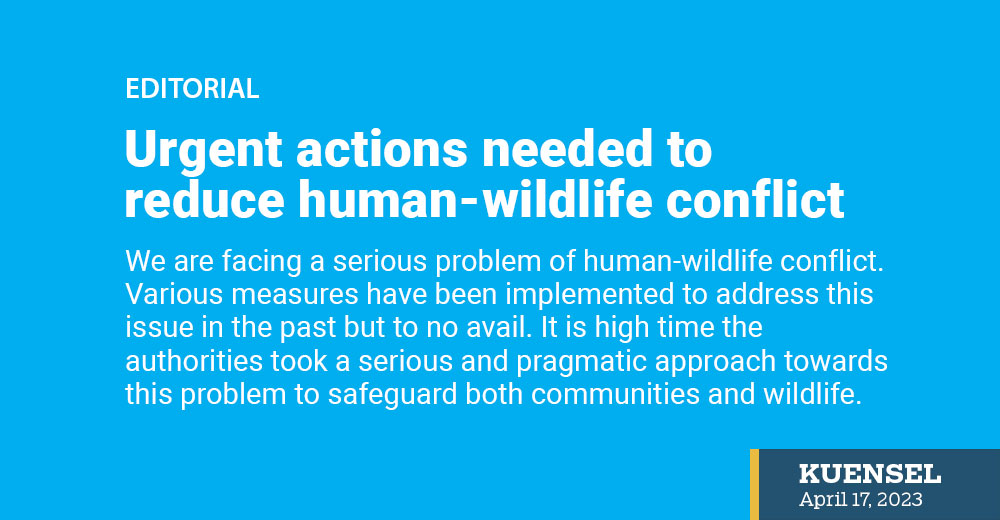We are facing a serious problem of human-wildlife conflict. Various measures have been implemented to address this issue in the past but to no avail. It is high time the authorities took a serious and pragmatic approach towards this problem to safeguard both communities and wildlife.
Human-wildlife results from an imbalance between human population growth and the shrinking forest cover due to increasing agricultural activities, forest fires, hydro-power projects, and infrastructure development. Such development projects have not only fragmented natural habitats but also destroyed the ecological balance of the region. The consequences of this human-led ascent on the ecosystem are profound and reflect the problem of environmental degradation.
The conflict between humans and animals is a significant concern for Bhutan’s conservation efforts. Incidents of crop raiding, damage to property and infrastructure, and even human casualties have been reported over the years. In many instances, farmers have resorted to using lethal traps or killing animals to protect their livelihoods. This is not a sustainable solution, and it only increases the conflict between humans and wildlife. On the other hand, the authorities have failed to provide adequate compensation and support to affected communities. These factors have only aggravated the problem.
To solve this issue, it is crucial to follow an integrated approach. This requires collaboration between the concerned Government agencies, non-governmental organisations, local communities, and conservationists. They should work cohesively to identify the causes, analyse the impact and develop a well-rounded strategy to mitigate human-wildlife conflict.
Effective measures such as building electric fences, using chilli-powder-dipped ropes, or installing motion-sensor alarms around the farms can help reduce animal depredation on crops. The government must also take an active role in implementing wildlife corridors and enhancing the existing ones. These corridors can act as a natural pathway for animals to move from one forest to another, which will help to ensure their survival and prevent the erosion of the ecosystem.
Furthermore, it is equally essential to provide support to communities affected by such conflicts. This can only be achieved by involving community leaders and sensitising them on the importance of wildlife conservation. It is the responsibility of the government to provide compensation for any loss, damage, or death caused by wildlife. Besides, it is crucial to provide alternative crops or livelihood options to farmers that are not attractive to wildlife. The authorities must work closely with the communities to develop solutions that are specific and tailored to their local needs.
Human-wildlife conflict is a major threat to the survival of both humans and wildlife. This issue cannot be ignored any longer. We must take immediate action to address this problem before it is too late. The government must take a pragmatic approach and work collaboratively with communities, conservationists, and NGOs to find viable solutions.
We must remember that natural habitats are intrinsically linked with our lives, and without a healthy environment, there can be no sustainable future. It is imperative that all stakeholders take their responsibility seriously and come together to combat this issue. By working together, we can ensure a bright future where both humans and wildlife can thrive.


